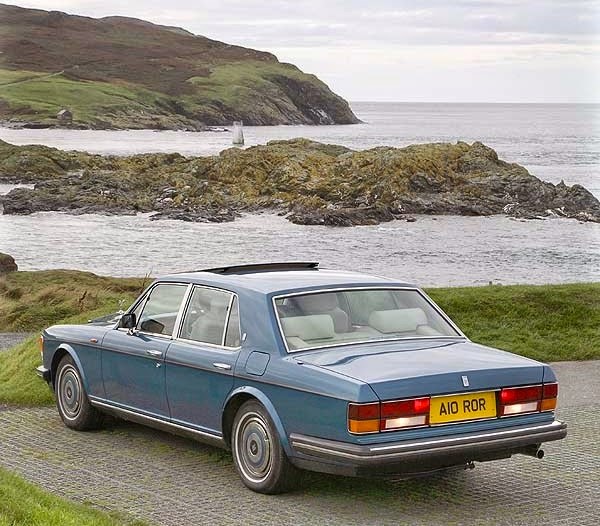Silver Spirit II
(1990-1994)
Engine : 8 cylinder, 90 degree V configuration
Transmission : 3 speed automatic gearbox, one piece propeller shaft,
hypoid bevel differential
Chassis : 5 seater, 4 door saloon, steel monocoque, separate sub frames
front and rear
Dimensions :wheelbase 120.5 inches
Performance : Max speed 120 mph (193 km/h)
When Rolls-Royce announced their new models, the Rolls-Royce Silver Spirit II and its long wheel base
derivative the Rolls-Royce Silver Spur II inSeptember 1989,this was declared to be a statement of
affirmation in the marque.
It cannot be denied, however, that with the introduction of these models, speculation began as to
whether these cars represented the last production series of the types and heralded a new series of
models to be released to the public.
Such speculation apart, the Silver Spirit II and the Silver Spur II had more than skin-deep differences
to their forebears. By taking advantage of the advances made in technology, particularly in electronics,
the engineers at Crewe had reworked the Rolls-Royce self-levelling systemand
developed a suspension without an equal in the world.
Vertical, longitudinal and lateral accelerometers monitored acceleration, road surface conditions and braking
and sterring changes. All data from external transducers and switches were received by a
microprocessor control unit. This information was compared continuously with programmed
threshold values for each switching control and the damper values adjusted as necessary
within milliseconds.
The interior of Silver Spirit II gained modest, although useful, alterations and additions.
An extensive programme of ergonomics research led to a
redesigned dashboard with several controls and switches repositioned. Directly in the driver's field of
vision a new warning module was installed which provided data on vital systems and fluid levels on an
"only when necessary" basis.
The split level air conditioningcould be tuned more precisely due to two additional outlets in the
dashboard.
A sound system with ten speakersand a 100 watt amplifier was considered to provide
concert hall quality.
Heated front seats with an electrically operated lumbar support and a
leather trimmed two-spoke steering wheel underlined how carefully Rolls-Royce had
considered any feature which
would make the new product a true driver's car.
Rolls-Royce had produced a pair of very desirable motor cars and now saw the need to provide an
anti-theft alarm as standard thus helping keep their customers' precious possessions from
changing hands in an unintended way.


